Archaeology & History
Egypt Just Held an Astonishing, Real-Life Mummy Parade Though the Streets of Cairo to Celebrate the Opening of a New Museum—See Photos Here
The mummies were transported in oxygen-free nitrogen capsules.
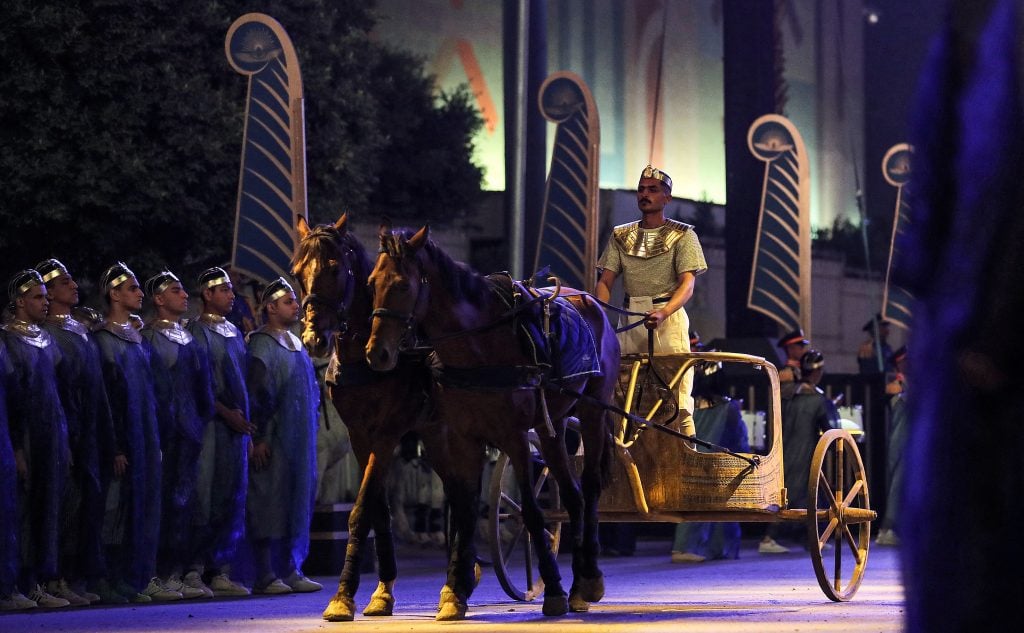
The mummies were transported in oxygen-free nitrogen capsules.

Sarah Cascone

Cairo celebrated the long-awaited opening of its National Museum of Egyptian Civilization with a procession of 22 ancient Egyptian royal mummies, transporting them across the city to their new home, where they will go on view later this month.
Safely moving the millennia-old remains was a multimillion-dollar affair that involved building special shock-absorbent vehicles as well as repaving the roads along the route to ensure a smooth ride. To maintain optimal preservation conditions, the mummies were put into oxygen-free nitrogen capsules for the duration of their journey.
Each of the 18 kings and four queens had their own gold and blue car, designed to look like the pharaonic boats used to transport ancient royals to their tombs, and featuring the winged sun symbol used by the pharaohs.
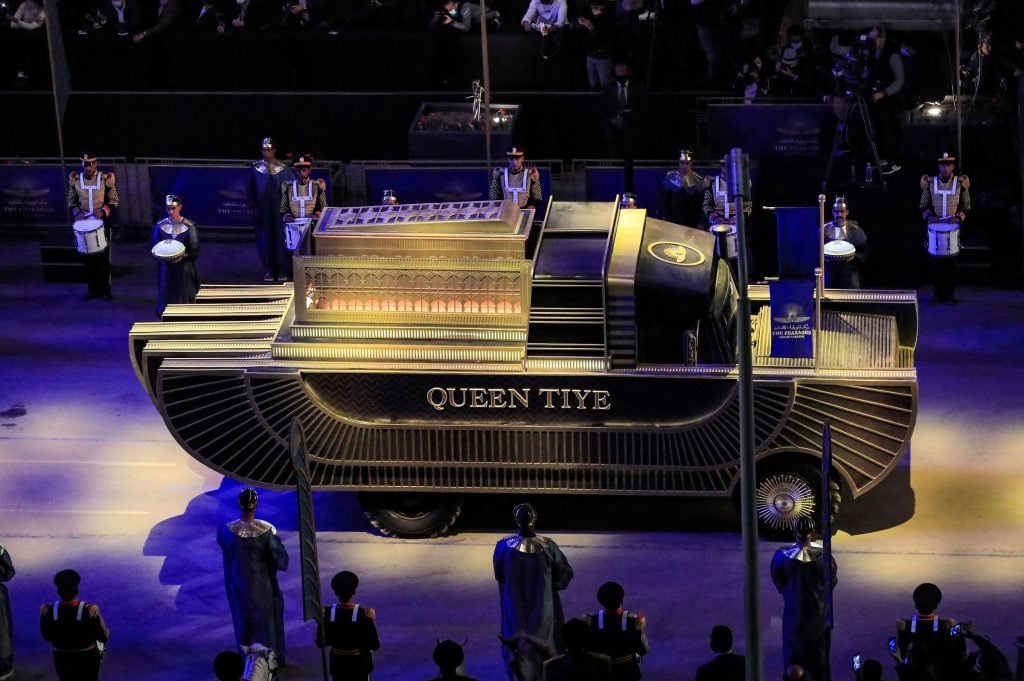
The carriage carrying the mummy of Queen Tiye, wife of Amenhotep III, advances as part of the parade of 22 ancient Egyptian royal mummies Photo by Khaled Desouki/AFP via Getty Images.
The three-mile parade started at the Egyptian Museum near Tahrir Square in downtown Cairo. Egyptian authorities spent months preparing for the event, dubbed the Pharaohs’ Golden Parade, which involved horse-drawn chariots and hundreds of performers in ancient-style garb.
Although the new museum aims to recapture some of the tourism lost in recent years due to political unrest and the pandemic, there were no crowds on hand to watch the spectacle. The parade route and the surrounding streets were closed for security measures and locals were told to watch the televised broadcast. The filming was orchestrated to block views of impoverished communities with banners, flags, and temporary barricades.

Customized vehicles for transferring mummies leave the Egyptian Museum during the Pharaohs’ Golden Parade in Cairo, Egypt, on April 3, 2021. Photo by Ahmed Gomaa/Xinhua via Getty Images.
“There is a tendency to try to show a better picture instead of fixing the existing reality,” Ahmed Zaazaa, an urban planner, told the New York Times. “The government says they are making reforms, but the vast majority of people in Cairo who live in working-class neighborhoods are excluded.”
The chronologically themed procession started with Seqenenre Taa, who reigned as the 17th dynasty’s last ruler during the 16th century BC, and ended with 12th century BC pharaoh Ramses IX, of the 20th dynasty.
The most famous pharaohs in the parade were Ramses II, of the 19th dynasty, who led the New Kingdom in the 13th century BC, during its most powerful period, for 67 years, and Queen Hatshepsut, who ruled as the second female pharaoh, during the 18th dynasty in the 15th century BC. All the mummies were originally excavated in the 19th century from the Valley of Kings and nearby Deir el-Bahri.
After about 45 minutes, parade ended in front of the new museum with a 21-gun salute, greeted by Egypt’s president, Abdel Fatah al-Sissi, who had inaugurated the main hall earlier that day.
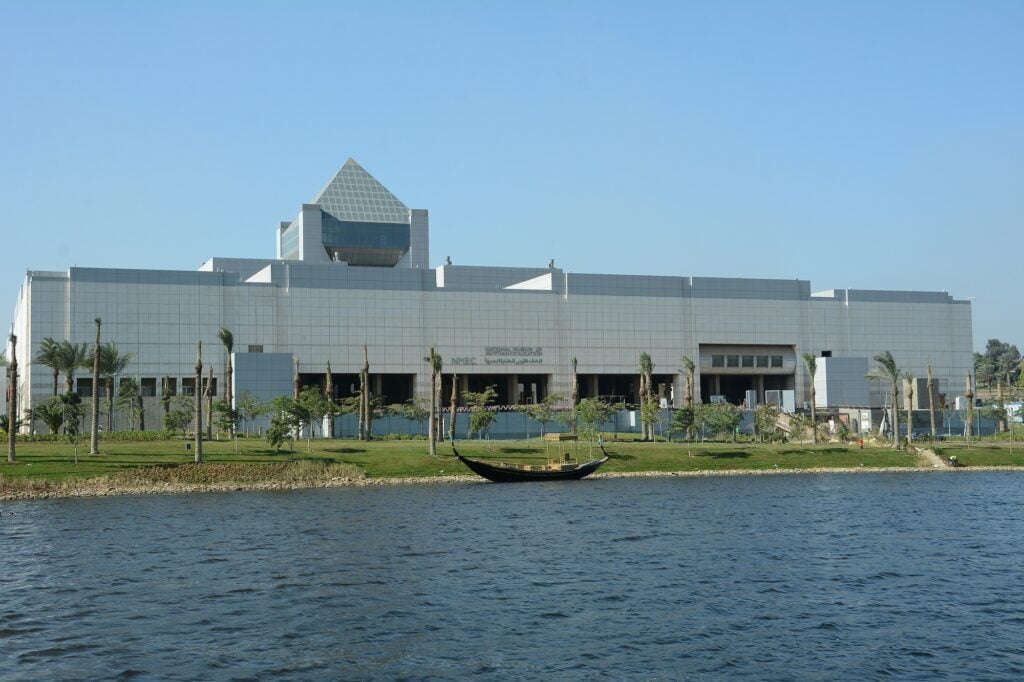
The National Museum of Egyptian Civilization in Cairo. Photo courtesy of the National Museum of Egyptian Civilization, Cairo.
Intended as a nationalist event celebrating Egyptian history, the parade “expresses the greatness of the ancient civilization that provided humanity, and still does, with a unique and diverse legacy, contributing to its progress and prosperity,” wrote Intisar al-Sissi, Egypt’s first lady, on Facebook.
Egypt began building the National Museum of Egyptian Civilization in 2002, and the project has faced numerous delays. It began welcoming visitors to view its 1,500 artifacts yesterday. The mummies will be on view in the museum’s royal hall of mummies beginning April 18. Until then, entry to the museum is half price.
See more photos of the parade and the new museum below.
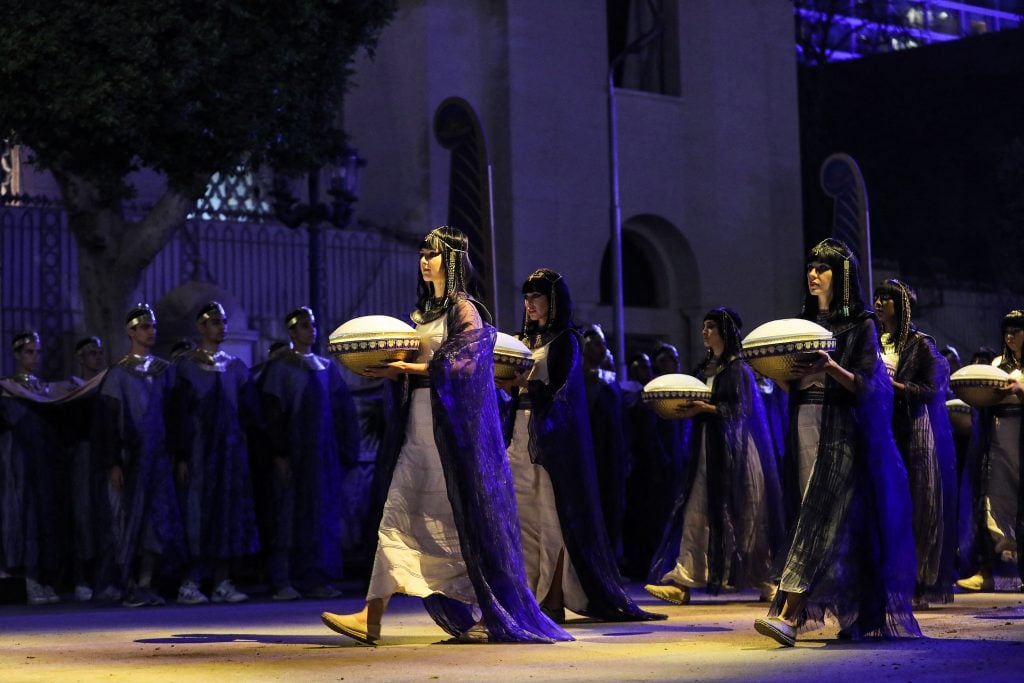
Performers dressed in ancient Egyptian costume march at the start of the parade. Photo by MAHMOUD KHALED/AFP via Getty Images
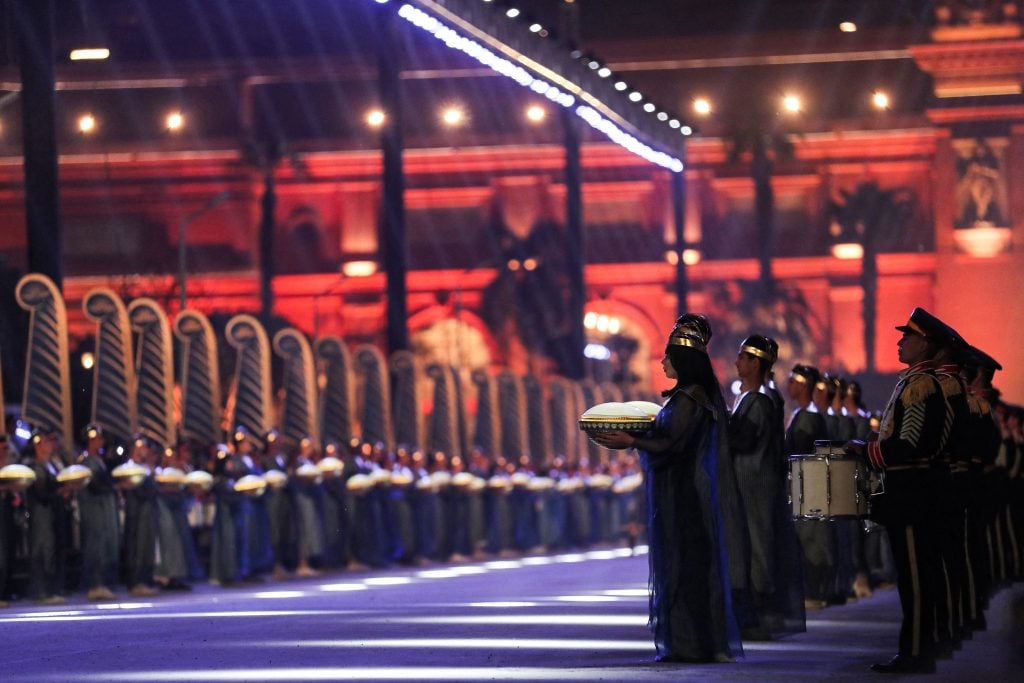
Performers dressed in ancient Egyptian costume wait at the start of the parade of 22 ancient Egyptian royal mummies. (Photo by MAHMOUD KHALED/AFP via Getty Images)

A mounted policeman dressed in ceremonial uniform rides along the parade area before the start of the parade. Photo by KHALED DESOUKI/AFP via Getty Images
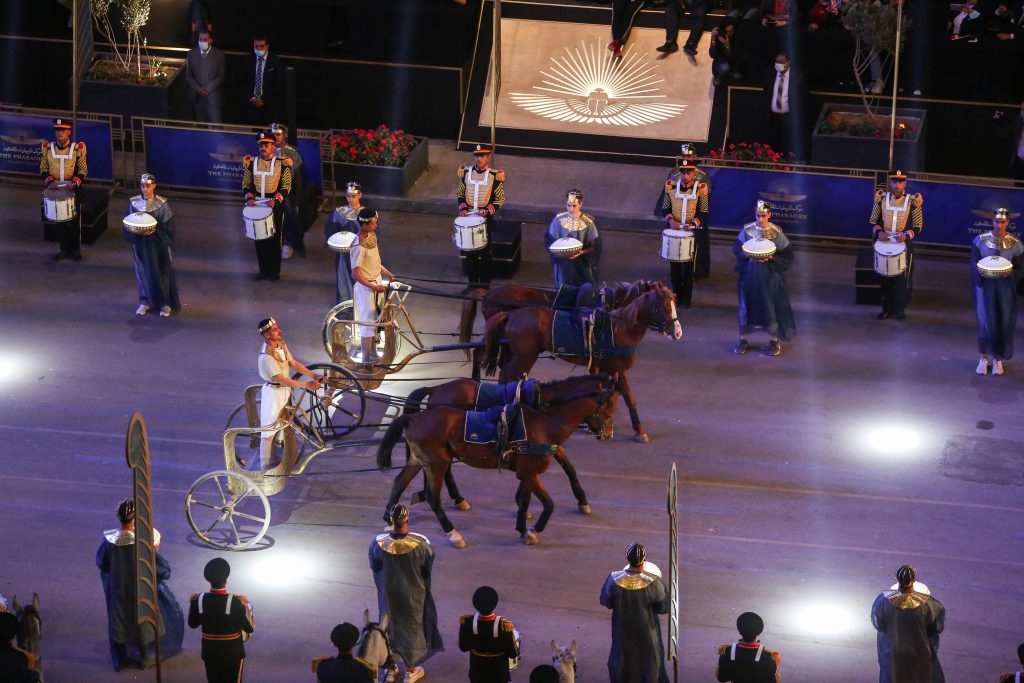
Artists perform as part of a convey transporting mummies from the Egyptian Museum in Tahrir Square to the new National Museum of Egyptian Civilization during The Pharaohs’ Golden Parade on April 03, 2021 in Cairo, Egypt. Photo by Islam Safwat/Getty Images
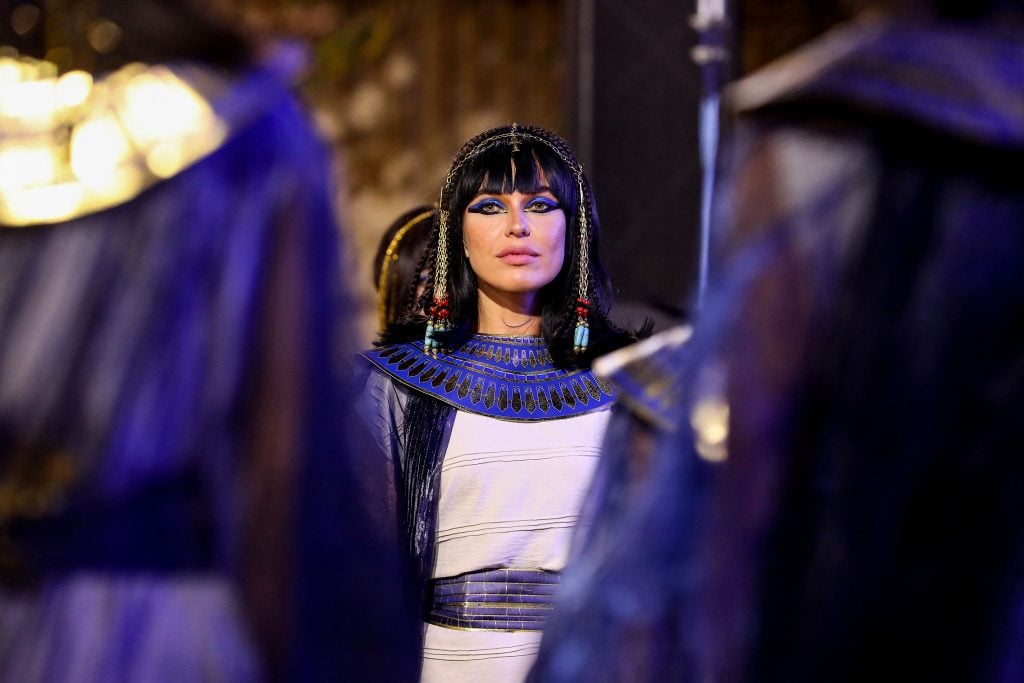
Performers dressed in ancient Egyptian costume wait at the start of the parade of 22 ancient Egyptian royal mummies departing from the Egyptian Museum in Cairo’s Tahrir Square. Photo by MAHMOUD KHALED/AFP via Getty Images

Performers dressed in ancient Egyptian costume stand by the Obelisk of Ramses II and recently-unveiled and restored four ancient sandstone sphinxes (extracted from the Avenue of the Sphinxes in Luxor) in the centre of the roundabout in Cairo’s Tahrir Square. Photo by MAHMOUD KHALED/AFP via Getty Images
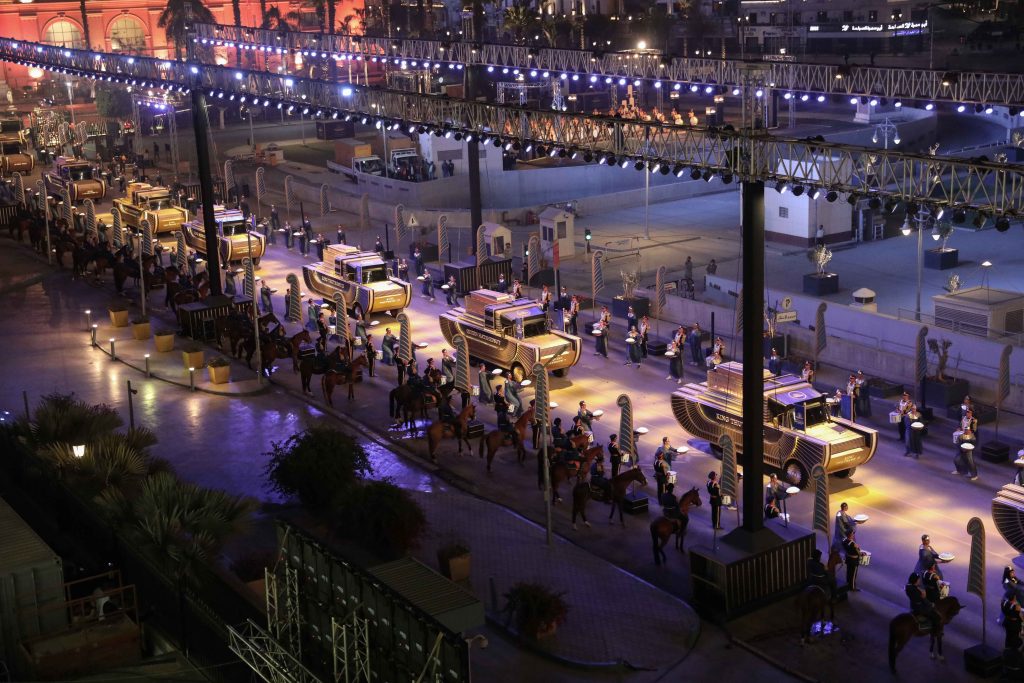
Specially designed vehicles transport 22 mummies in a convoy from the Egyptian Museum in Tahrir Square to the new National Museum of Egyptian Civilization, during the Pharaohs’ Golden Parade in Cairo, Egypt on April 03, 2021. Photo by Stringer/Anadolu Agency via Getty Images.

People in ancient Egyptian outfits perform during the Pharaohs’ Golden Parade in Cairo, Egypt, on April 3, 2021. Photo by Ahmed Gomaa/Xinhua via Getty Images.
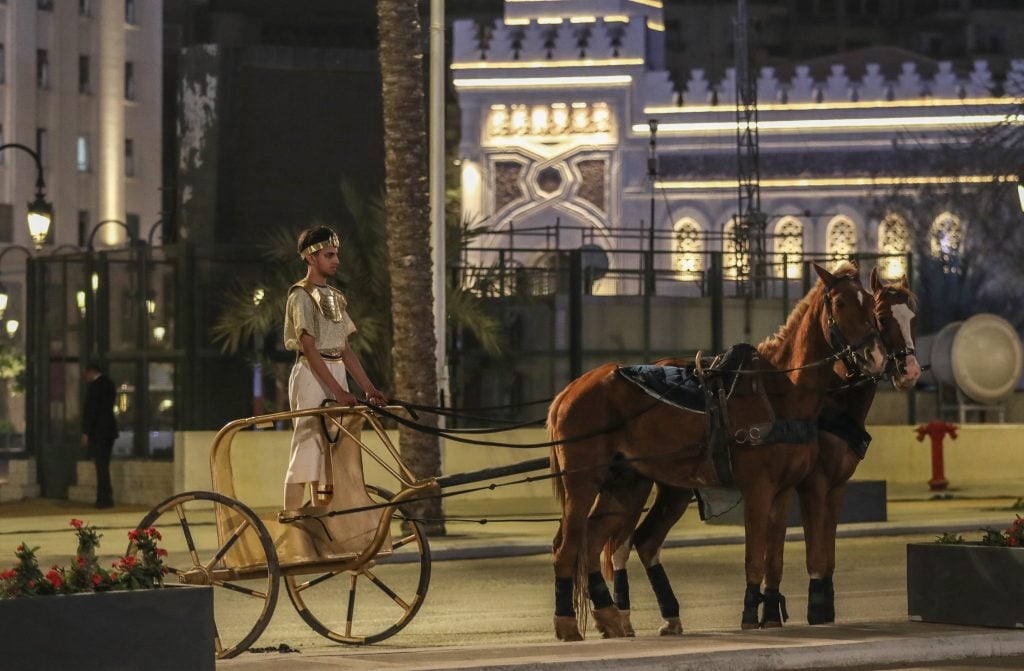
An artist in old traditional costume rides a horse-drawn carriage as specially designed vehicles transport 22 mummies in a convoy from the Egyptian Museum in Tahrir Square to the new National Museum of Egyptian Civilization, during the Pharaohs’ Golden Parade in Cairo, Egypt on April 03, 2021. Photo by Stringer/Anadolu Agency via Getty Images.
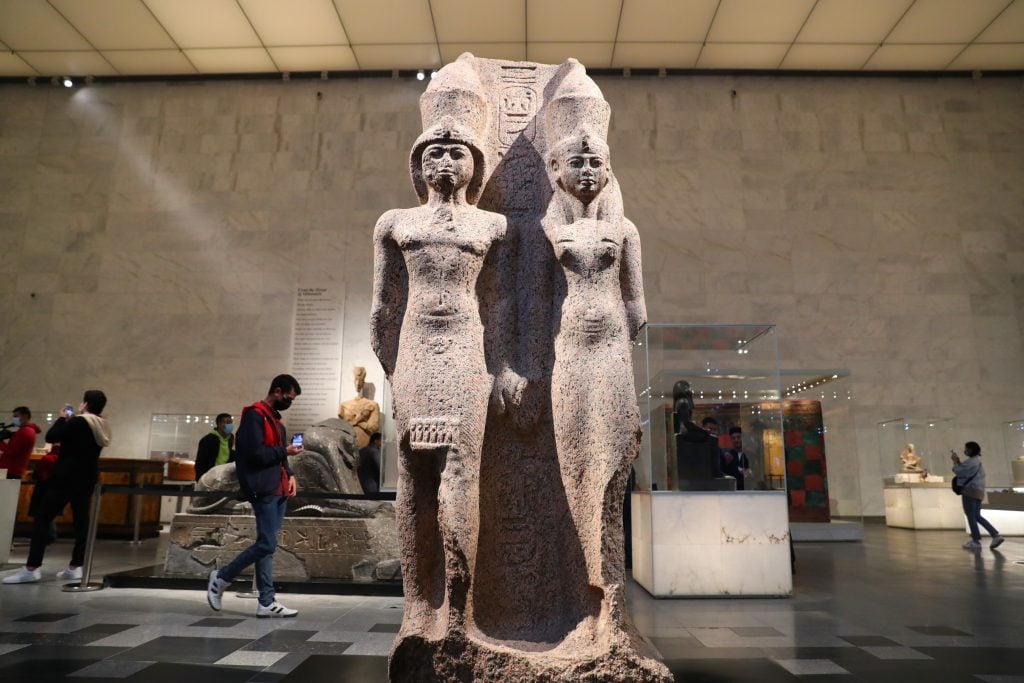
People visit the new National Museum of Egyptian Civilization in Cairo, Egypt, April 4, 2021. Photo by Sui Xiankai/Xinhua via Getty Images.

People visit the National Museum of Egyptian Civilization in Cairo, Egypt, April 4, 2021. Photo by Ahmed Gomaa/Xinhua via Getty Images.
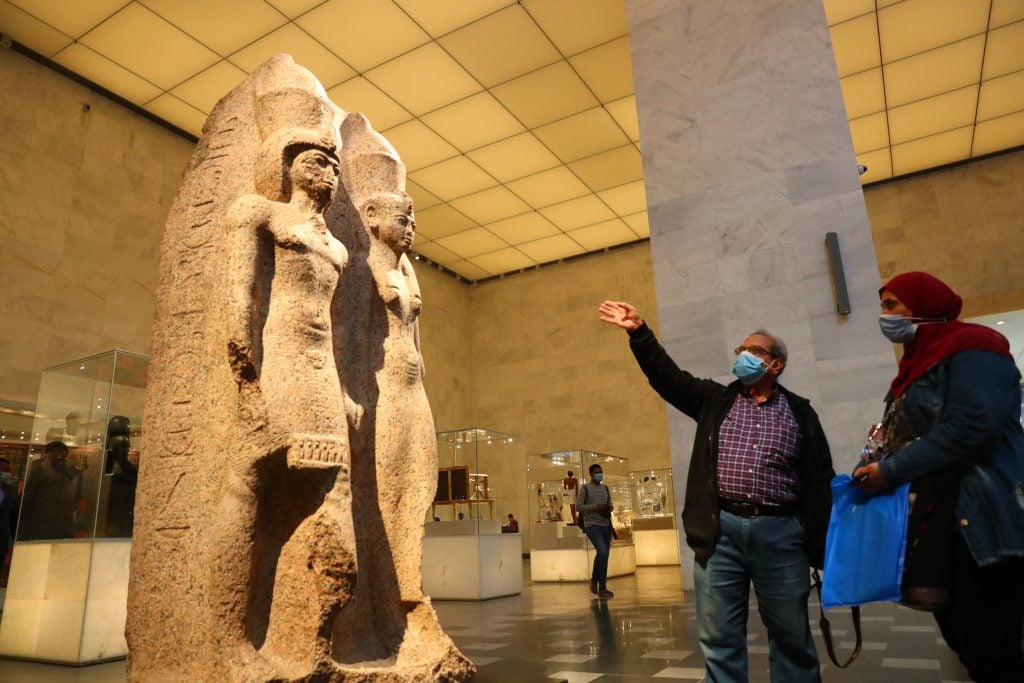
People visit the new National Museum of Egyptian Civilization in Cairo, Egypt, April 4, 2021. Photo by Sui Xiankai/Xinhua via Getty Images.
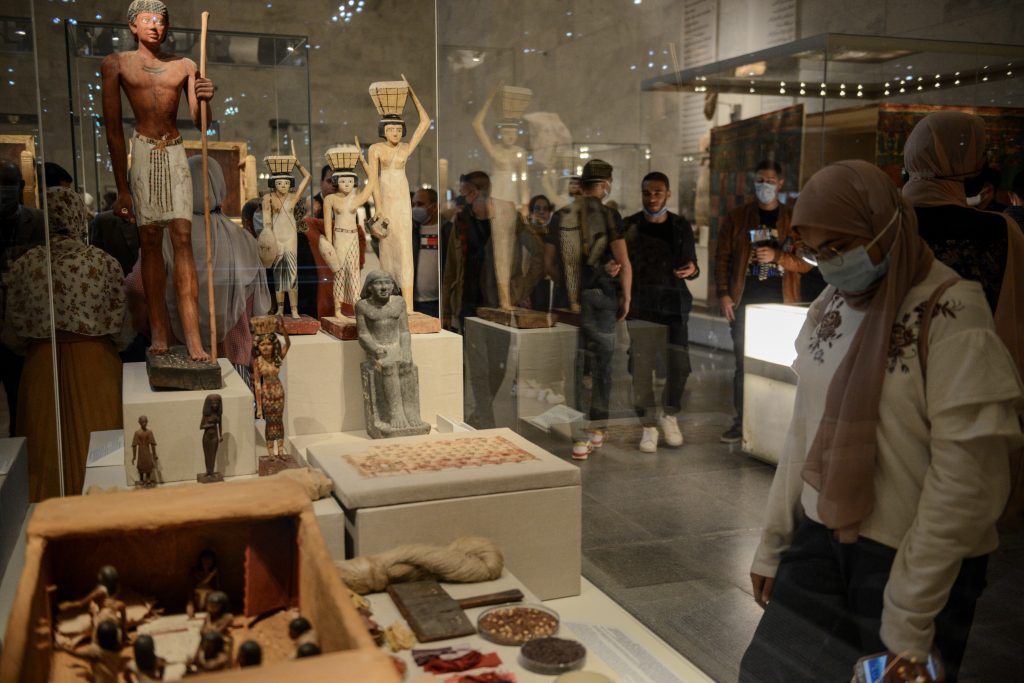
Pharaonic artifacts displayed at the new National Museum of Egyptian Civilization. Photo by Jonathan Rashad/Getty Images.